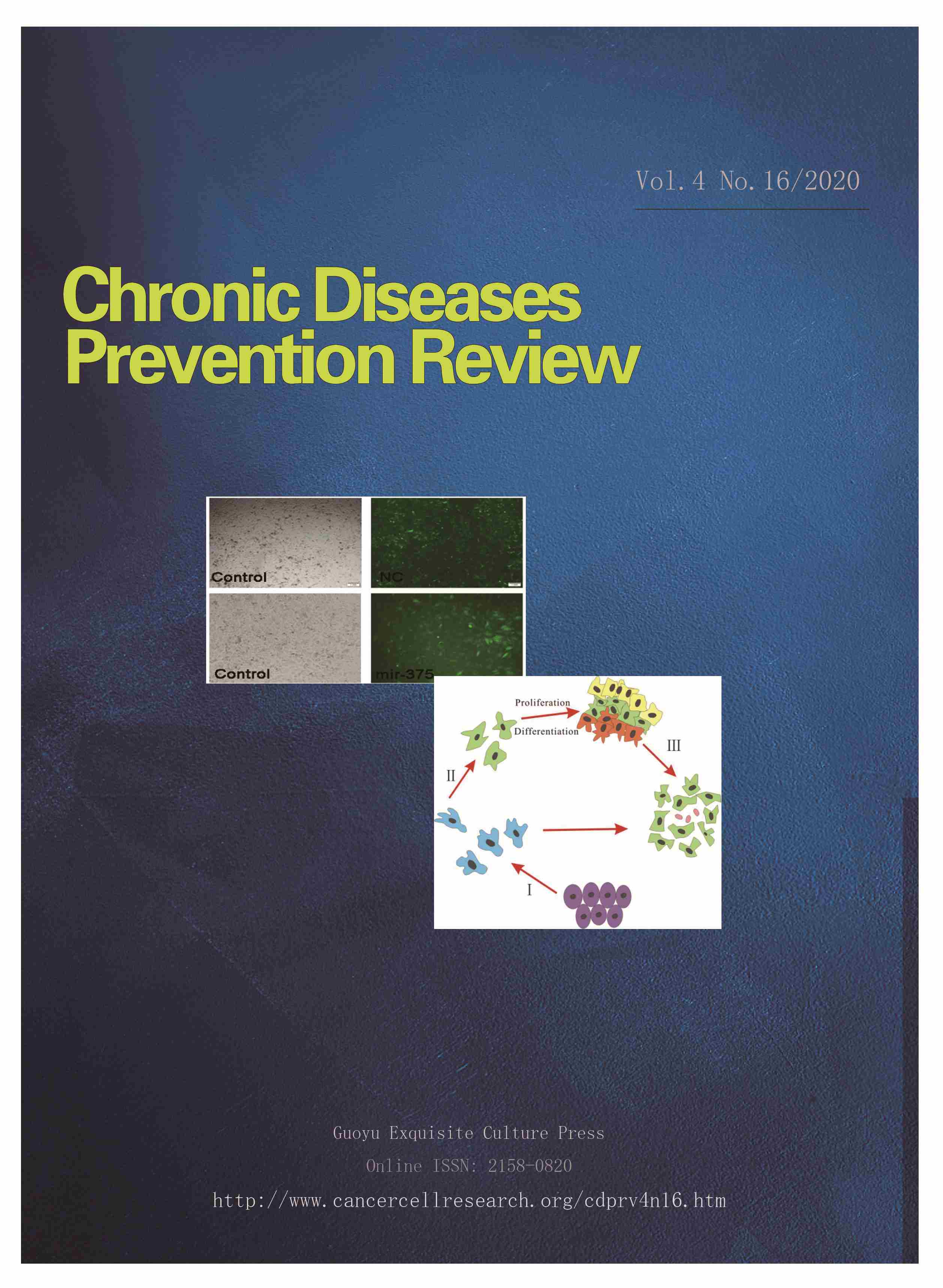Chronic Diseases Prevention Review (Online ISSN: 2158-0820)
Current Issue
Vol.4 No.16
Review: A review of post-traumatic stress disorder
by Linxuan Li
Chronic Diseases Prevention Review 2020 4(16) 1-4; published online 25 October 2020
Abstract: With
the development of technology and the passage of time,
people's material needs have been constantly met, and mental
health has become more and more important. In 2020, the
coVID-19 pandemic is sweeping the world. In the face of such
a serious public health safety incident, people not only pay
attention to their own safety issues, but also suffer from
stress, trauma and emotional distress. Post-traumatic stress
disorder is a kind of reactive mental disorder. With the
in-depth research on mental health, the research in this
field is also making new achievements. This article
summarizes existing research on PTSD from the perspectives
of its basic concept, risk factors, cognitive theory,
diagnosis and treatment, which can be an important
implication for future research in this field.
Open Access Download (free) PDF
Article: Risk of excessive daytime sleepiness in Parkinson’s disease: A meta-analysis
by Yu Gao, Fengju Jia, Liang Shen, Dongfeng Zhang, Xiaoli Shen
Chronic Diseases Prevention Review 2020 4(16)5-13; published online 5 December 2020
Abstract:
The present meta-analysis was conducted to estimate the
pooled prevalence of EDS in PD and explore the association
of PD with the risk of EDS. PubMed, EMBASE, and Web of
Science database were systematically searched up to Apr
2020, aim to find observational studies on investigating
excessive daytime sleepiness in Parkinson disease. Random
effects models were selected to evaluate the pooled
prevalence of EDS in PD and the Odds Ratio (OR) of EDS in PD
comparing with healthy control. Subgroup analysis and
meta-regression were conducted to explore sources of
heterogeneity. The funnel plot and Egger test were used to
assess publication bias. Thirteen articles with 3912
participants were included to pool the prevalence of EDS in
PD. The pooled prevalence of EDS in all PD patients was 30%
(95% CI: 24%-36%). Ten articles with a total number of 1375
PD patients and 1161 age-matched health controls were
enrolled to evaluate the association between PD and the risk
of EDS. The pooled OR for the risk of EDS in PD was 2.86
(95% CI: 1.89-4.33), indicating that PD was significantly
associated with an increased risk of EDS. EDS may cause
diminished life quality and hazardous accidents in PD
patients, early prevention and interventions of EDS were
essential in the treatment of PD.
Open Access Download (free) PDF
Article: The role of fine particulate matter (PM2.5) in asthma pathology
by Yuxuan You
Chronic Diseases Prevention Review 2020 4(16)14-20; published online 5 December 2020
Abstract: Asthma
is a chronic disease of the lungs which affected 45.7
million adults in China. Although some of the asthma cases
are inherited, in recent years more attention has been paid
to environmental factors, one of which is fine particulate
matter (PM2.5). PM2.5 refers to fine particulate matter with
a diameter less than 2.5 micrometers, which is small enough
to get deep into the lungs, often inducing a series of
pathological reactions. This article reviews important
findings and recent progress in biological mechanisms of
PM2.5 in the asthma pathology, including immunotoxicity,
inflammation, oxidative stress, airway remodeling and airway
hyperresponsiveness. This review may provide a basis for
improved asthma control as well as asthma prevention from a
mechanistic perspective.
Open Access Download (free) PDF
Article: Investigation of the “methyl” impact on bio-activity of dicarboxamides as potential ryanodine receptor activators
by Ruyi Jin, Weibin Xie, Linshan Li, Huangong Li, Na Yang, Yuxin Li, Lixia Xiong, Yu Zhao, Zhengming Li, Sha Zhou
Chronic Diseases Prevention Review 2020 4(16)21-27; published online 25 December 2020
Abstract:
To investigate the impact of methyl group in dicarboxamides
on bioactivity as ryanodine receptor activators, compound B
and C were designed, synthesized and evaluated against
oriental armyworm (Pseudaletia separata Walker) and
diamondback moth (Plutella xylostella (L.)) for their
insecticidal activity. All structures were characterized by
1H NMR, 13C NMR and HRMS and their relative absolute
configurations were confirmed by chiral HPLC and optical
polarimeter. The bioassay results showed that the number of
methyl group incorporated in the dicarboxamide structures
have clearly impact on each biological activity following
the sequence as di-methyl (A) ~ mono-methyl (B) > no methyl
group (C). The optical isomer of S configuration (D)
originated from structure B showed stronger activity than R
configuration (E), as well as higher activity against
diamondback moth (Plutella xylostella (L.)) than the
corresponding A. Through mode of action study by whole-cell
patch-clamp revealed that these compounds released stored
calcium ions from endoplasmic reticulum. It was concluded
that chiral carbon with S configuration in the aliphatic
amido side chain of dicarboxamide might be a critical factor
from the standpoint of molecular design strategy.
Open Access Download (free) PDF

